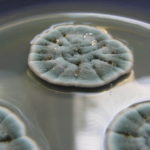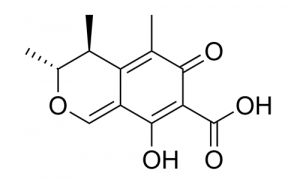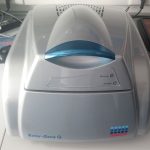Scientific research
Moulds isolated from surfaces of various TMPs shall be identified using molecular techniques; in the subsequent course, their TMP presence shall be linked to climate conditions witnessed in five Croatian study regions during ripening. The identified mould species shall be linked to sensory and physicochemical profile of the studied products and their mycotoxin contamination, the above effort being supplemented by pinpointing of genes responsible for mycotoxin production.
In order to establish TMP contamination with mycotoxins, the concentrations of AFB1, OTA, CIT, STC and CPA shall be determined, preceded by the development of analytical techniques suitable for the determination of yet only poorly investigated STC and CPA. The development of these techniques shall make a major contribution to the potential of analytical tools to be used in further global scale-research into the prevalence of these mycotoxins in meat products. The unique scientific contribution of this Project is to give insight into the concentrations of each and every mycotoxin of relevance for meat products and to attempt to link mycotoxin presence in meat to consumer exposure, taking thereby into account also the climate specific of a given production region. Based on data on dietary habits in terms of TMP consumption across the Croatian population, TMP consumption – mediated consumer exposure to mycotoxins shall be assessed. The results of this research shall also serve as a valuable rationale to be used by competent authorities responsible for food-related issues in establishing the maximum permissible levels of mycotoxins in meat products, as well as a valuable guidance for producers that shall help them prevent mycotoxin contamination of TMPs they produce.
Sensory profiling
Sensory evaluation shall make use of a quantitative descriptive analysis within the frame of which the colour intensity of muscle and fat tissue, the uniformity of that colour, the presence of favourable and unfavourable smells, smoke, sweet, salty, sour and bitter taste, the softness and palatability of the product, and its aroma attributable to moulds, aromatic herbs, spices, and other parameters, shall be assessed.
Physicochemical profiling
TMP samples shall be assessed for their water activity (aw), pH-value and the water content. On top of the above, other parameters responsible for the nutritive profile of a product, including total protein, fat and ash, salt, sugar and fatty acid composition, shall be established.
Mould identification, DNA isolation and PCR
Superficial moulds shall be isolated in the primary and secondary manner, so as to be identified. Based on gross morphology and microscopic features of the grown mould colonies, the mould genus shall be determined. Upon DNA extraction, a conventional PCR shall be launched so as to replicate the target DNA region using specific primers and the replicated regions shall be sequenced as to pinpoint the mould species.
Corroboration of genes responsible for mycotoxin synthesis
Toxicogenic moulds identified on TMP surfaces shall be tested for the presence of specific genes responsible for the production of mycotoxins AFB1, OTA, CIT, STC & CPA targeted by this study using conventional, multiplex and real-time PCR. Genes responsible for mycotoxin production shall be linked to mycotoxin prevalence established in the analysed TMP samples.
Development of techniques for mycotoxins determination
LC-MS/MS technique suitable for the determination of AFB1, OTA, CIT, STC and CPA mycotoxin concentration in TMPs will be develop and validate. To that end, the approach to methodology development and the efficiency validation criteria shall be applied. Based on the results obtained during the methodology development, protocols applicable to extraction, chromatography separation settings and mycotoxins detection via mass spectrometry shall be established.
Consumer exposure assessment
Based on the established habits of consumption of certain TMPs and data on mycotoxin concentrations established within this Project frame and acceptable intake of these mycotoxins, TMP consumption-mediated consumer exposure shall be assessed using adjusted computing models.
Monitoring of climatic conditions
Climatic conditions will be recorded for the regions of Croatia where TMP production and sampling of products was carried out, as well as for months of products ripening. Data on average temperature and rainfall, and their deviations from average values over the annual average, will be considered through impact of regional climate on the occurrence of contamination.













